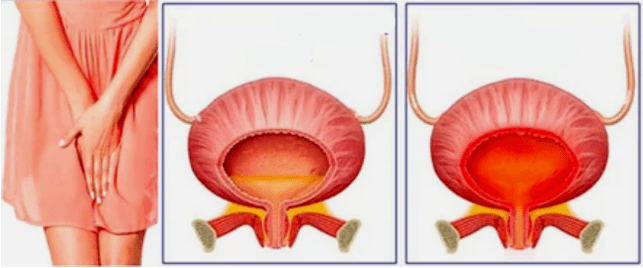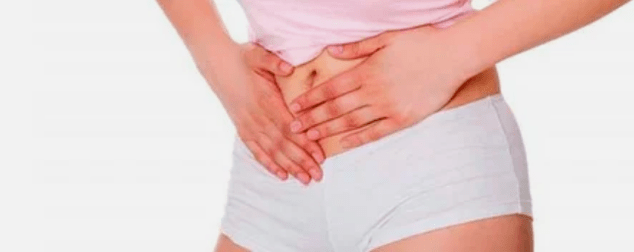Chronic cystitis is the "special" disease that every tenth woman suffers.Often encounter new deterioration after 1-2 weeks.During the antibiotic process.
What's wrong, how to overcome the disease?To obtain clear answers to these questions, it should be understood the emergence of chronic cystitis and what happens in the bladder.
Chronic cystitis - The fact is the cause of inflammation

Chronic cystitis is a collective concept, and it is just the result of multiple diseases.At the same time, the inflammation process has developed for more than 2 months, which not only affects the mucosa of the bladder (as is the case with acute inflammation), but also affects the deep layer.
Exclusive antibiotics (such as acute inflammation) are useless to treat the disease.Relieve pain - just deceive yourself and agree to temporary relief.At the same time, the disease will continue to progress and will sooner or later become obviously "rejected" to live.We provide a rational way to understand disease.
During chronic inflammation, pathogenic bacteria develop rapidly in the bladder.It can be not only bacteria, but also mushrooms, protozoa and viruses.Therefore, it is not always reasonable to take antibiotics.
Important!Chronic cystitis is recommended only when urine is detected in sensitive microbial analysis.
Patients with chronic cystitis always have pathology that supports inflammation:
- Leukocytes in the bladder neck (incorrect!) or vaginal metaplasia - Chronic cervical cystitis causes benign degeneration of the mucosa, which is the result of several acute attacks of cystitis or sexual infection, including hiding (urea, chamydia, etc.);
- Bladder, polyps, diverticulum for urolithia - a good place for bacteria and fungi to spread;
- Kidney inflammation, buoyancy, kidney disease - urine infection, urine continues to enter the bladder;
- The deep arrangement of urethral openings revealed during intercourse triggers post-cystitis;
- Reduced local immune protection - occurs during hormone failure (insufficient synthesis of estrogens observed during pregnancy, menopause, ovarian pathology), genital disease, diabetes;
- Chronic focus of infection (dose caries, chronic tonsillitis, sinusitis, etc.) - Pathogens are transmitted with the blood.
Important!These diseases are the real cause of chronic cystitis.Therefore, the disease should be considered together with causality.For example, the correct diagnosis sounds like this: "Bubble Breathing Guard. Chronic Bacterial Cystitis."
The worsening of chronic cystitis may cause:
- A small amount of water is drunk;
- Ingesting spicy foods, alcohol;
- Hypothermia, acute respiratory infection;
- “Greenhouse” effect – wearing dense synthetic linen, narrow jeans;
- Basically incompatible with personal hygiene.
Symptoms of chronic cystitis in women
The symptoms of chronic cystitis are not as good as acute inflammation.The following options for chronic cystitis are distinguished according to the severity of clinical symptoms and frequency of recurrence:
- Stable Potential - Complaints and laboratory changes in urine can be confirmed only by endoscopy.
- Potential rare recurrence - Acute pictures of cystitis no more than 1 year;
- Potential frequent recurrence - 2 or more aggravated after a year;
- Current inflammation is slow and confirmed in laboratory and endoscopic;
- Interstitial - Apparent symptoms, persistent pain syndrome.
Important!Chronic cystitis with chronic pelvic pain should be distinguished.In most cases, in the final pathology, there was no change in urine analysis and no endoscopic inflammation.
Changes in the bladder wall range from Cartarrhal to ulcerative and necrosis.
Symptoms of chronic cystitis:
- Pain is an almost constant pain in the lower abdomen (above the pubic bone) that grows when filling the bladder and periodically painful.Soreness during urination - before, after, but more commonly at the end of bladder emptying.
- Frequent Urination - In a review of treatment for chronic cystitis, women noticed that for a long time, frequent impulses did not allow you to do without a toilet, ending up releasing a small amount of urine and an incomplete emptying sensation.There is usually Nicturia (exercise on the toilet at night) and stressful urinary incontinence.
- Changes in urine - Blood appears in the urine as the ulcer lesions and necrosis process begins.
Important!Unlike urethritis, pain in chronic cystitis is not always associated with urination behavior.
If symptoms of chronic cystitis in women become exacerbated after treatment (after 1-2 weeks), inflammation is triggered by activation of one type of microorganism.Recurrence caused by weeks after treatment indicates another type of pathogen repeated infection.The women also pointed out signs of chronic cystitis and noted the symptoms of the underlying disease – symptoms of gynecological pathology, lower back pain or colic disease secreted from the vagina during renal pathology.
Important!Analysis of urine in chronic cystitis does not always reveal signs of inflammation and detect pathogens.The only study that guarantees confirmation of the diagnosis is cystoscopy.Sometimes urology is required.
How to correctly treat chronic cystitis?

Most women with chronic cystitis have tried all antibiotics and homeopathic therapies and know what a therapeutic injection of the bladder and ionic mucus is.Then why does it seem that the regulations are correct and complicated treatment is useless?The answer is simple - the cause of inflammation has not been eliminated.Effective treatments for chronic cystitis are performed in the following areas:
- Eliminate causal pathology
Depending on the diagnosis, the urethra (plastic) is abnormally arranged through the urethra, laser ablation of white blood cells and polyps, etc.Almost all surgeries are performed through the urethra and do not leave scars on the skin.The patient undergoes spinal or intravenous anesthesia.
During cystoscopy, antiurethral operations are often performed (e.g., stone removal).Women's comments on the treatment of chronic cystitis usually indicate the soreness of endoscopy.Cistoscopicy should be performed so that the patient does not feel pain.After urethral surgery, a woman was in the hospital for only one day and could go to work the next day.
- The fight against infection
Depending on the type of pathogen detected, a process of prescribing an antibiotic, antiviral or antifungal drug is prescribed for the patient.Using bacterial cystitis, a bactericidal drug (not antibacterial!) effect was prescribed for 7-10 days.
- Treatment of chronic cystitis in women
In most cases, NSAID is used for rapid pain syndrome.2-3 weeks later.NSAIDS courses, the effect lasted for up to 3 months.At the same time, antihistamines are specified.
- Immune stimulation
With antibiotic therapy, the use of immunostimulatory agents can replace preventive courses over the next 6 months.
- Eliminate tissue hypoxia
To improve the nutrition of the bubble mucosa and prevent adhesions from forming, anti-drugs were prescribed.
Preparations that restore microcirculation and have immune stimulation effects are also widely used in male prostatitis and are prescribed in chronic cystitis in women.
- Alternatives to prevent epithelial
Recently, hormone drugs have been actively used for this purpose.Estrogen and progesterone accelerate the development of the protective layer on the bubble mucosa.The widely used drug odivin is produced in tablets and candles.
- Local therapy
For local exposure to the inflammatory process, they resorted to devices (injections) of dioxin, heparin, colloidal silver solutions (anti-bacterial bacteria, viruses, simplest and fungal).However, this treatment is only applicable to extreme cases to rule out infection.
- physiotherapy
Physical Therapy - Drug Electrophoresis, Sonotherapy, Laser Treatment, Electrical Stimulation, Magnetic Therapy - Prevents further replacement of the bladder epithelium and has an absorption effect.Medication therapy can actively supplement physical therapy exercises to circulate blood and strengthen pelvic muscles.
- Therapy for folk therapy
Only with the approval of the attending physician can it be possible to treat chronic cystitis with the bathroom and herbal soup at home!Most of them have diuretic and preservative effects.In addition, the stomach activates tissue regeneration, and the cattle bulum fights with fungal infections, chamomile and ivy, eliminating muscle cramps (utilizing pain), and the purpura has antiviral effects.Treatment with herbs lasts for at least one month, and the best results can be achieved through the combination of several herbs.
Important!In chronic cystitis, it is necessary to consume enough water to eliminate fresh and salty dishes, smoked meats and foods containing preservatives and chemical dyes from the diet.
What is the prediction?
The duration of treatment and the prognosis of the disease depend on the extent of damage to the bladder epithelium, accompanied by pathological properties and immune status.To prevent recurrence, doctors recommend following:
- 10 days.Drink herbal soup;
- The next 10 days are antibiotics;
- In another 10 days.Soup for other herbs.
Similar plans were used for 3-6 months.After the main treatment, the intensification of chronic cystitis is actually eliminated.
The most unfavorable prediction of scar formation in the bladder and urethra.In this case, surgical removal of the connective tissue focus is required.
It should also be remembered that confusing medications without a doctor's prescription can eliminate acute symptoms, but will not restore the mucosa of the bladder and will not relieve causal disease.Only if a doctor clearly understands the cause of the disease will he prescribe an effective treatment plan separately and helps get rid of the fatigue symptoms of chronic cystitis!
























